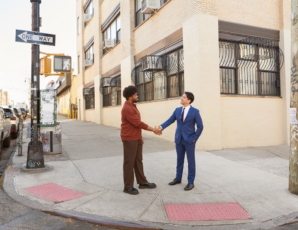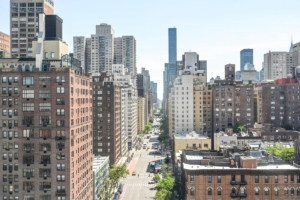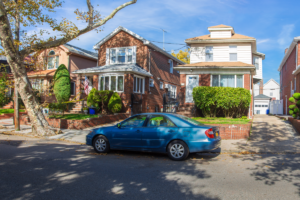With New York City subway ridership numbers hitting all-time highs and delays becoming more common, spending less time on the subway is worthwhile. More often than not, however, New Yorkers are faced with choosing between a shorter commute time or a more affordable apartment. The two rarely go hand-in-hand, but StreetEasy did the calculations to find out how much a longer commute could save you on rent or mortgage payments.
Using 42nd Street as the destination point, StreetEasy calculated the time from every station in the MTA subway system and then looked at sale and rent prices near those stations to determine how much money is spent per minute on the subway. We also adjusted the time to 42nd Street for stations that offered an express train, assuming riders would take an express train instead of a local train where available. We found that time really is money when it comes to the NYC subway: Median rent falls by $33 a month for each additional minute it takes to get to 42nd Street. For buyers, homes sell for a median of $22,172 less for every minute added on a subway ride.
Renters Save $33 Per Minute
In New York City, those who live near a subway station that provides a 20-minute subway commute or less to 42nd Street have a median asking rent of $3,200, according to StreetEasy’s analysis. Rent falls to $2,450 for a 20- to 40-minute subway commute to 42nd Street and to $1,800 if you are willing to endure a 40- to 60-minute commute[i].
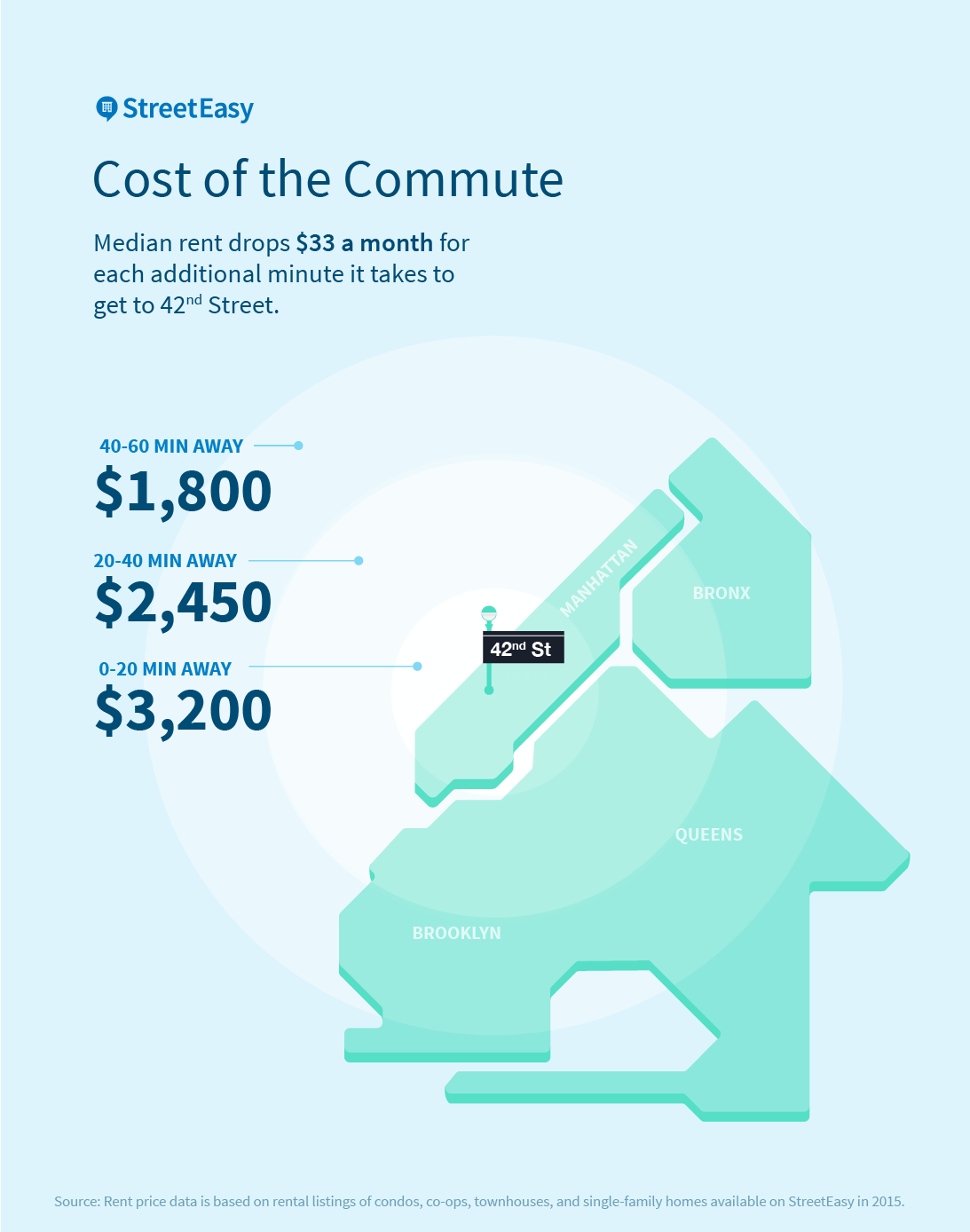
So where is the sweet spot? For rentals in Manhattan with a commute of less than 30 minutes, the best bargain is the 145th Street stop on the 3 line, where surrounding homes[ii] had a median asking rent of $1,850. In Brooklyn, Sterling Street on the 2 or 5 trains offers a 28-minute commute to 42nd Street and a median asking rent of $2,100. In Queens, from the 33rd Street Rawson station, it only takes 11 minutes to get to 42nd Street. Around this station, the median asking rent is $1,800 – a true steal in a city as expensive as NYC. From the Bronx, the Jackson Avenue station is a subway rider’s best bet, with a 25-minute commute and median asking rent of $1,050.[iii] See below for a ranking of rental units with the shortest commute and the lowest median rent.
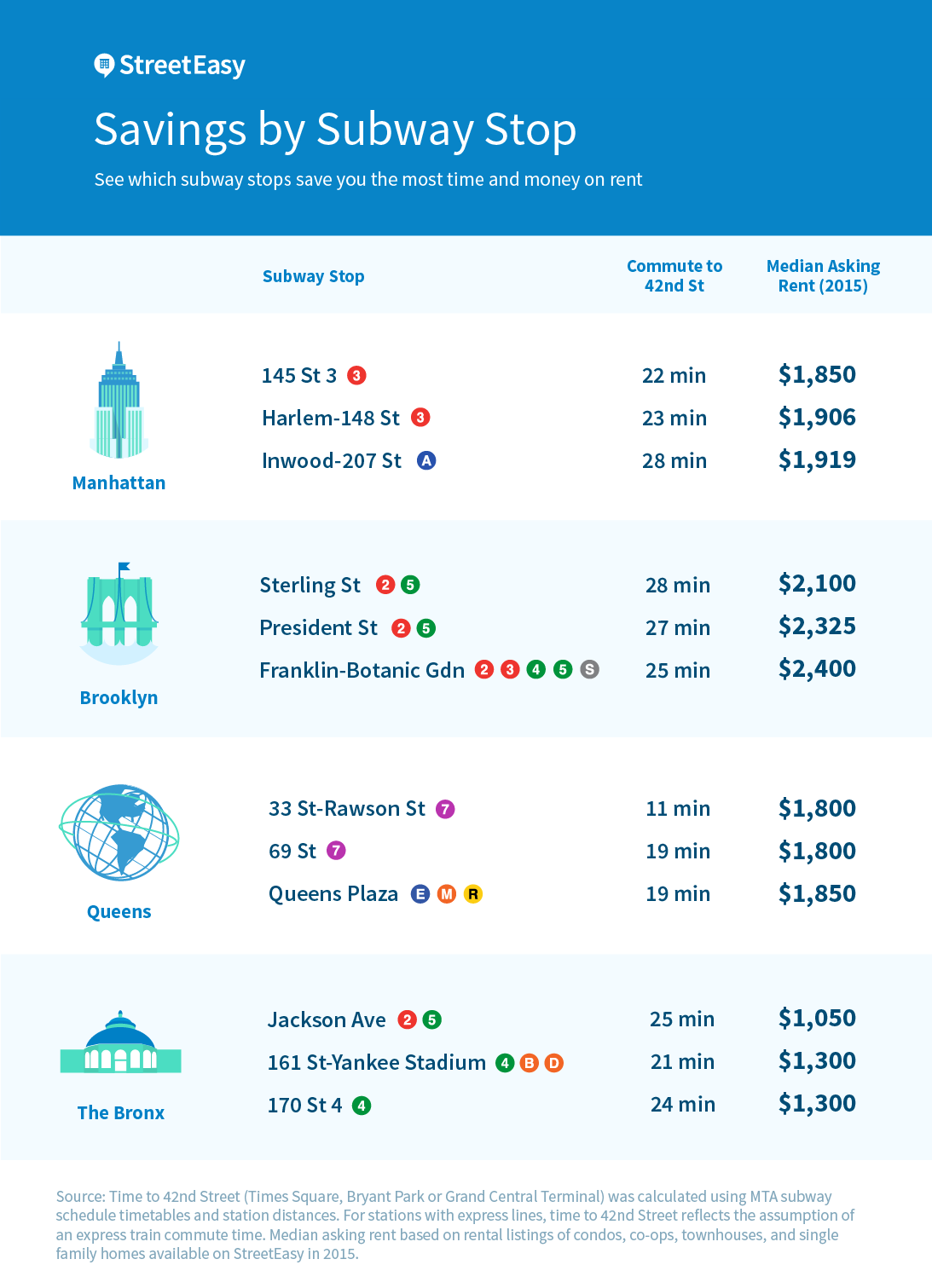
Buyers Save One Minute or $22k
StreetEasy’s analysis found that homes sell for a median of $22,172 less for every minute added on a subway ride.
For neighborhoods that are within a 20-minute or less subway commute to 42nd Street, the median sales price is $1,100,000. Sales prices fall to $689,000 if you are willing to ride on the subway for 20 to 40 minutes before you get to 42nd Street, and to $429,000 if you are willing to have a 40- to 60-minute commute.
If you’re a buyer in Manhattan prioritizing a commute time of less than 30 minutes to Times Square, the least expensive sales prices are found for homes near the Inwood-207th Street station on the A line, which provides a 28-minute commute to 42nd Street and has a median sales price of $384,000. In Brooklyn, the best time and money bargain is at the President Street stop on the 2 and 5 lines which offers a 27-minute commute and a median sales price of $525,000.
In Queens, buyers are only 15 minutes away at the 52nd Street, with a median sales price of $269,000. Meanwhile, 161 St-Yankee Stadium stop on the 4,5 and B lines in the Bronx provides a 21-minute commute to Times Square and has a median sales price of $189,000.
See What You Can Save
On the map below, select either median asking rent or median sales price and the desired subway line, based on where you live or are planning to move. Hovering over a station dot will give you the station name, the time it takes to get to 42nd Street, median asking rent or median recorded sales prices in 2015 for properties near that station and the 2015 ridership total according to the MTA. Clicking the link in the pop-up window will also allow you to search for listings on StreetEasy that are near that station.
[tableau server=”public.tableau.com” workbook=”SubwayTimeMap” view=”Dashboard2″ tabs=”no” toolbar=”no” revert=”” refresh=”yes” linktarget=”” width=”800px” height=”860px”][/tableau]
As the subway gets more and more crowded, and delays become more frequent, spending less time riding the subway may ultimately be worth it, but saving time may cost you.
[i] The time it takes to get to 42nd Street (Times Square, Bryant Park or Grand Central Terminal), was calculated using MTA subway schedule timetables and station distances from the three respective stations along 42nd Street. We adjusted for express trains where possible. Times for stations along lines that do not go to 42nd Street directly, such as the G, J, or L trains, incorporated a time adjustment from the likely transfer station, Court Square, Chambers Street / Brooklyn Bridge and 14th-Street Union Square, respectively.
[ii] Homes that surround or are near a station are those that have the shortest distance to that station.
[iii] Median asking rent data is based on rental listings of condos, co-ops, townhouses, and single-family homes available on StreetEasy in 2015.



